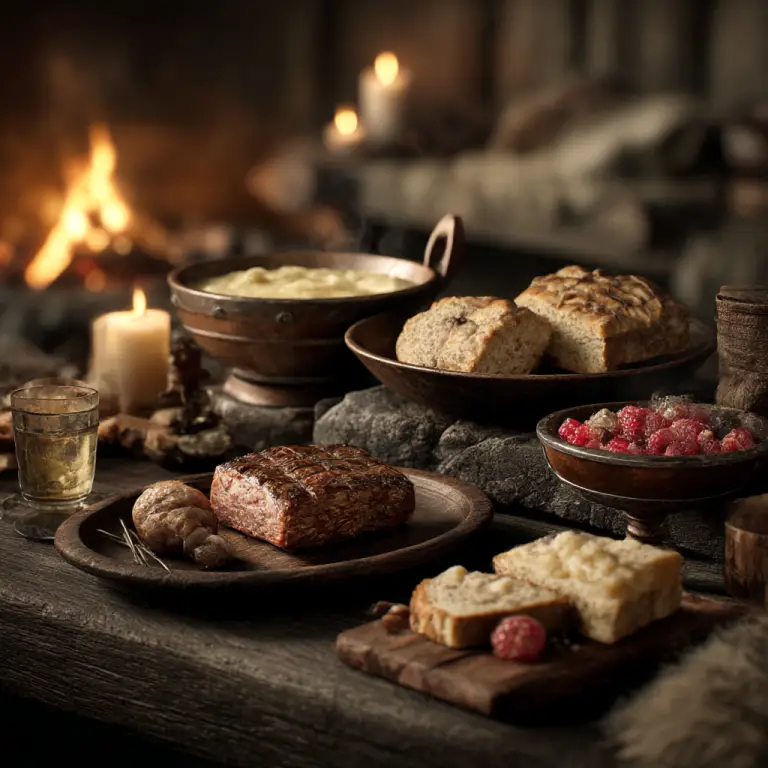Viking cuisine was shaped by the landscape, climate, and resources of Scandinavia. Far from the simple and plain meals often imagined, Norse food was varied, hearty, and adapted to sustain people through long winters and demanding days. Viking recipes reflect a connection to the land and sea, using locally available ingredients such as fish, game, grains, vegetables, dairy, and preserved foods.
Grains and Breads
Bread was a staple in the Viking diet. Vikings used barley, rye, and oats to make dense, nutritious loaves. Flatbreads and crispbreads were common, often baked on heated stones or in simple ovens. Porridges made from these grains provided a versatile meal, sometimes mixed with milk or fermented dairy for extra flavour.
Meat and Game
Vikings relied on domesticated animals and hunting for their protein. Pork, beef, mutton, and goat were regularly consumed, and hunting provided venison, elk, and wildfowl. Meat was often salted, smoked, or dried to ensure it could be stored for long periods. Roasting over open fires was common, and stews combining meat with vegetables and grains were a practical way to feed families.
Fish and Seafood
Living near rivers, lakes, and the sea, fish was a vital part of the Viking diet. Herring, salmon, trout, and cod were eaten fresh, smoked, or dried. Shellfish such as mussels and oysters were also consumed. Fish could be boiled, grilled, or preserved through salting and drying to provide protein year-round.
Vegetables and Legumes
Vegetables were seasonal and often grown in small gardens. Cabbage, leeks, onions, carrots, turnips, and wild greens were common. Peas and beans provided additional nutrition and were sometimes dried for winter use. Root vegetables were particularly valued for their ability to be stored for long periods.
Dairy and Fermented Foods
Dairy products were essential, particularly in rural Viking households. Milk, cheese, and butter were made from cows, goats, and sheep. Fermented foods, such as soured milk and skyr, offered both nutrition and preservation. Fermentation was also used for beverages, including ale and mead, which played a significant role in social and ceremonial life.
Herbs, Flavouring, and Cooking Techniques
Vikings used herbs and wild plants to flavour their dishes. Dill, horseradish, mustard, juniper berries, and wild garlic were commonly used. Salt was a valuable preservative, while honey and berries provided natural sweetness. Cooking methods included boiling, roasting, smoking, and baking, with clay ovens or open hearths at the heart of most Viking homes.
Recreating Viking Recipes Today
Modern interpretations of Viking food focus on simplicity, local ingredients, and rustic flavours. Dishes like barley porridge with honey, roasted root vegetables, smoked fish, and hearty meat stews give a glimpse into Norse culinary traditions. For those interested in historical cooking, Viking recipes offer a fascinating way to experience the flavours and techniques of a world shaped by the land, sea, and climate of Scandinavia.
